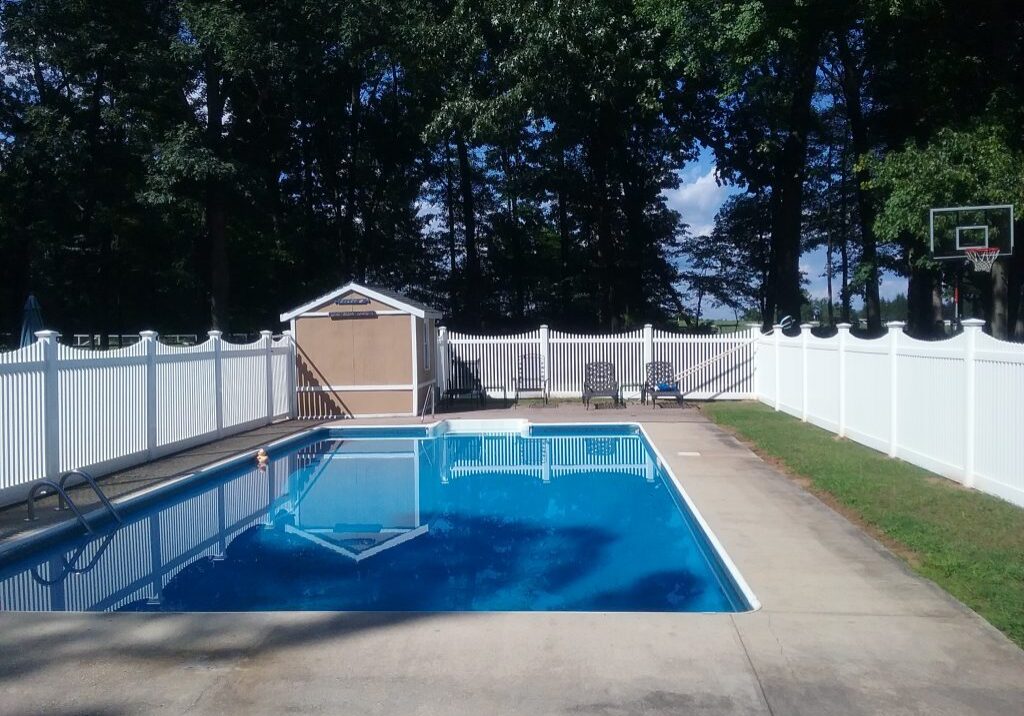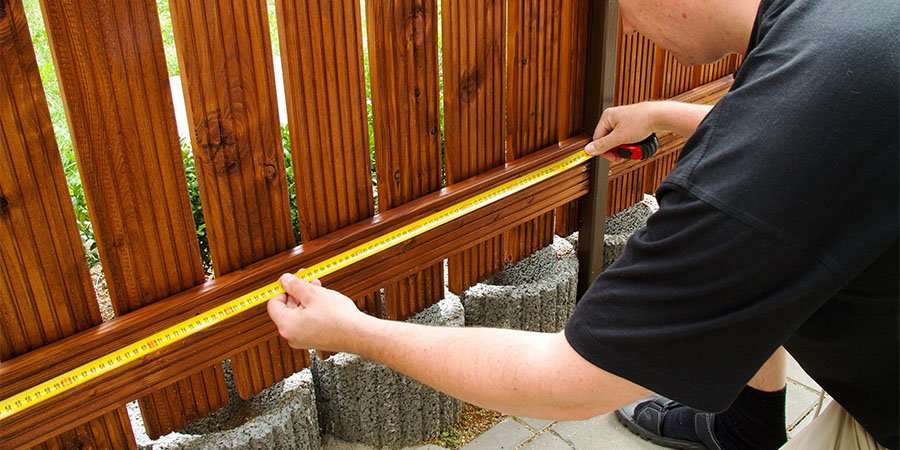All Categories
Featured
Your fence is an investment that provides privacy, visual, and protection allure. To maintain it in excellent shape, normal upkeep tailored to its material is crucial. Each fence type has unique maintenance needs based on its product's toughness, direct exposure to the components, and other aspects. Right here's an extensive overview to preserving various secure fencing materials.
![]()
Weather Protection: Use a top notch sealer or stain every 2-- 3 years to shield the wood from moisture and UV rays. For severe environments, annual reapplication may be necessary. Cleaning: Make use of a yard hose pipe or a stress washing machine on a reduced setup to get rid of dust and mildew. Follow up with a moderate cleaning agent for persistent discolorations. Repair services: Check for loosened or rotting boards and change them quickly. Tighten up nails or screws to maintain the framework stable. Insect Control: Use termite-resistant timber or deal with the fence with pest repellents to stay clear of problems. 2. Vinyl Fencings. Plastic fences are prominent for their longevity and very little maintenance demands.
Cleansing: Clean the surface with a garden tube or a blend of soap and water to get rid of dirt and algae. For challenging discolorations, use a vinyl-specific cleaner or a soft-bristle brush. Examinations: On a regular basis check for fractures or bending, particularly after strong winds or heavy influences. Repair work: Replace any damaged areas promptly. Plastic fencings usually use modular components, making repair services uncomplicated. 3. Chain-Link Fences. Chain-link fencings are cost-efficient and tough but need regular interest to avoid rust.
Corrosion Removal: Use a cord brush to eliminate corrosion from exposed areas, then use a rust-inhibiting spray to secure the metal. Cleansing: Hose down the fence consistently to remove dust. For grime, use soapy water and a stiff-bristle brush. Fixings: Tighten any type of sagging areas or change damaged web links to maintain safety. 4. Wrought Iron Fencings. Wrought iron fencings offer toughness and beauty however are susceptible to rust otherwise correctly preserved.
![]()
Corrosion Prevention: Scratch off corrosion places with sandpaper and use a rust-resistant primer complied with by outdoor metal paint. Evaluate for rust a minimum of two times a year. Cleansing: Wipe down with a towel and soapy water to preserve the surface. Stay clear of rough cleaners that can harm the surface area. Repainting: Repaint every few years to protect the metal from deterioration and keep it looking fresh. 5. Light weight aluminum Fences. Light weight aluminum fencings are light-weight, durable, and immune to rust, needing much less maintenance compared to functioned iron.
Cleaning: Tidy with soap and water to get rid of dust and dirt. Wash extensively to protect against residue. Inspections: Look for loosened equipment or damages, specifically after storms. Protect or change components as required. Touch-Ups: Apply paint to scratched or cracked areas to avoid damage to the protective layer. 6. Compound Fences. Compound fences are made from a blend of timber and plastic, incorporating longevity with marginal maintenance.
![]()
Cleaning: Utilize a tube or a soft brush with soap and water to clean up the surface area. Prevent using rough chemicals. Inspections: Search for warping, specifically in extreme warmth. Tighten or replace any kind of broken panels. Form Avoidance: While composite materials withstand rot, keep the fence clean and completely dry to prevent mold and mildew build-up. 7. Bamboo Fences. Bamboo is an environment-friendly choice yet needs careful upkeep to keep its appearance and durability.
Sealing: Apply a safety sealant or varnish every 2-- 3 years to defend against dampness and UV damages. Cleaning: Clean with mild soap and a soft sponge or brush. Avoid high-pressure washing, which can harm bamboo fibers. Repairs: Change damaged posts or sections to maintain architectural honesty and look. General Maintenance Tips for All Secure Fencing Kind. Normal Assessments: Check your fence at the very least as soon as every season for damage, wear, or loose parts. Trimming Greenery: Keep plants, vines, and shrubs away from the fence to avoid dampness damage and decrease insect activity. Seasonal Changes: In regions with snow, stay clear of stacking snow against your fencing to avoid architectural stress. In hot climates, examine for heat-related warping or fading. Conclusion. Each secure fencing material has its one-of-a-kind maintenance needs, however a positive approach to care can expand its lifespan and maintain it looking its best. Wooden fencings need more interest contrasted to vinyl or aluminum, but each product take advantage of normal cleaning, evaluations, and prompt repair work. By tailoring your upkeep methods to the kind of fencing you own, you'll guarantee that it remains to offer curb, privacy, and security allure for many years ahead.

- Wood Fencings. Wood fences are valued for their all-natural look yet require consistent upkeep to avoid damage.
Weather Protection: Use a top notch sealer or stain every 2-- 3 years to shield the wood from moisture and UV rays. For severe environments, annual reapplication may be necessary. Cleaning: Make use of a yard hose pipe or a stress washing machine on a reduced setup to get rid of dust and mildew. Follow up with a moderate cleaning agent for persistent discolorations. Repair services: Check for loosened or rotting boards and change them quickly. Tighten up nails or screws to maintain the framework stable. Insect Control: Use termite-resistant timber or deal with the fence with pest repellents to stay clear of problems. 2. Vinyl Fencings. Plastic fences are prominent for their longevity and very little maintenance demands.
Cleansing: Clean the surface with a garden tube or a blend of soap and water to get rid of dirt and algae. For challenging discolorations, use a vinyl-specific cleaner or a soft-bristle brush. Examinations: On a regular basis check for fractures or bending, particularly after strong winds or heavy influences. Repair work: Replace any damaged areas promptly. Plastic fencings usually use modular components, making repair services uncomplicated. 3. Chain-Link Fences. Chain-link fencings are cost-efficient and tough but need regular interest to avoid rust.
Corrosion Removal: Use a cord brush to eliminate corrosion from exposed areas, then use a rust-inhibiting spray to secure the metal. Cleansing: Hose down the fence consistently to remove dust. For grime, use soapy water and a stiff-bristle brush. Fixings: Tighten any type of sagging areas or change damaged web links to maintain safety. 4. Wrought Iron Fencings. Wrought iron fencings offer toughness and beauty however are susceptible to rust otherwise correctly preserved.

Corrosion Prevention: Scratch off corrosion places with sandpaper and use a rust-resistant primer complied with by outdoor metal paint. Evaluate for rust a minimum of two times a year. Cleansing: Wipe down with a towel and soapy water to preserve the surface. Stay clear of rough cleaners that can harm the surface area. Repainting: Repaint every few years to protect the metal from deterioration and keep it looking fresh. 5. Light weight aluminum Fences. Light weight aluminum fencings are light-weight, durable, and immune to rust, needing much less maintenance compared to functioned iron.
Cleaning: Tidy with soap and water to get rid of dust and dirt. Wash extensively to protect against residue. Inspections: Look for loosened equipment or damages, specifically after storms. Protect or change components as required. Touch-Ups: Apply paint to scratched or cracked areas to avoid damage to the protective layer. 6. Compound Fences. Compound fences are made from a blend of timber and plastic, incorporating longevity with marginal maintenance.

Cleaning: Utilize a tube or a soft brush with soap and water to clean up the surface area. Prevent using rough chemicals. Inspections: Search for warping, specifically in extreme warmth. Tighten or replace any kind of broken panels. Form Avoidance: While composite materials withstand rot, keep the fence clean and completely dry to prevent mold and mildew build-up. 7. Bamboo Fences. Bamboo is an environment-friendly choice yet needs careful upkeep to keep its appearance and durability.
Sealing: Apply a safety sealant or varnish every 2-- 3 years to defend against dampness and UV damages. Cleaning: Clean with mild soap and a soft sponge or brush. Avoid high-pressure washing, which can harm bamboo fibers. Repairs: Change damaged posts or sections to maintain architectural honesty and look. General Maintenance Tips for All Secure Fencing Kind. Normal Assessments: Check your fence at the very least as soon as every season for damage, wear, or loose parts. Trimming Greenery: Keep plants, vines, and shrubs away from the fence to avoid dampness damage and decrease insect activity. Seasonal Changes: In regions with snow, stay clear of stacking snow against your fencing to avoid architectural stress. In hot climates, examine for heat-related warping or fading. Conclusion. Each secure fencing material has its one-of-a-kind maintenance needs, however a positive approach to care can expand its lifespan and maintain it looking its best. Wooden fencings need more interest contrasted to vinyl or aluminum, but each product take advantage of normal cleaning, evaluations, and prompt repair work. By tailoring your upkeep methods to the kind of fencing you own, you'll guarantee that it remains to offer curb, privacy, and security allure for many years ahead.
Latest Posts
Learn How to Cut Costs on Car Maintenance with Montclare Auto Repair’s Special Deals
Published May 30, 25
1 min read
Uncover Cut Costs on Car Maintenance with Montclare Auto Repair’s Exclusive Deals
Published May 27, 25
1 min read
Discover WyHy FCU – Top Benefits for Your Future
Published May 24, 25
1 min read
More
Latest Posts
Learn How to Cut Costs on Car Maintenance with Montclare Auto Repair’s Special Deals
Published May 30, 25
1 min read
Uncover Cut Costs on Car Maintenance with Montclare Auto Repair’s Exclusive Deals
Published May 27, 25
1 min read
Discover WyHy FCU – Top Benefits for Your Future
Published May 24, 25
1 min read